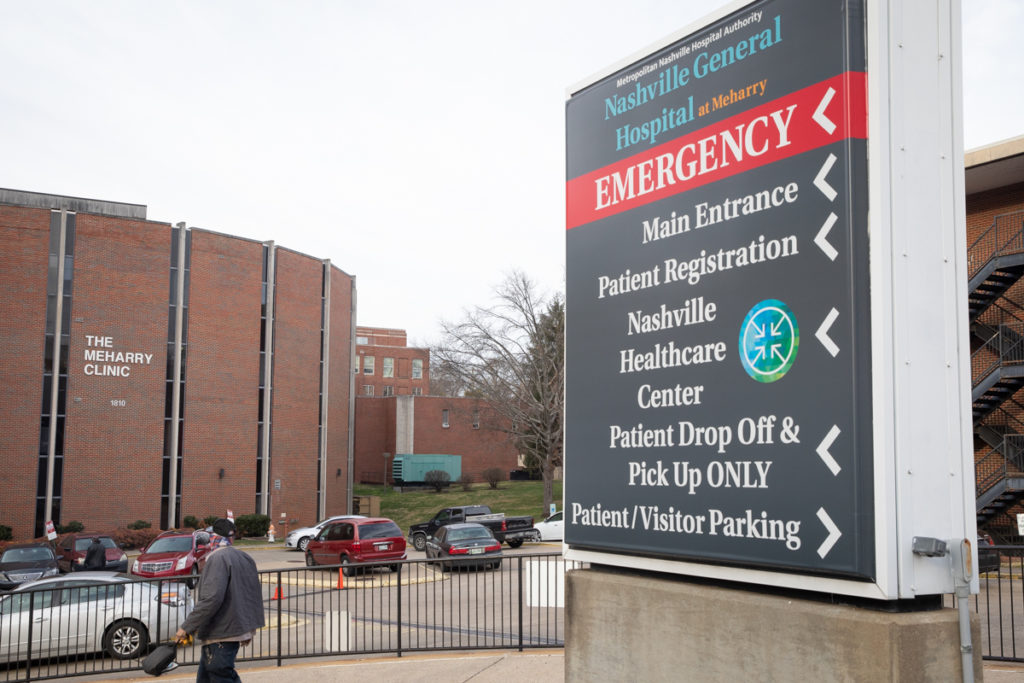
Dr. Joseph Webb runs Nashville General Hospital, but he understands people don’t want to camp out there — especially when they need an emergency room doctor.
“They shouldn’t have to wait two-and-a-half to four hours,” he said. “And that’s the national average.”
As CEO, Webb started working with administrators to tackle an ambitious goal: no wait times. They’re getting close. Patients are averaging five minutes from walking in the door to seeing a doctor.
The plan they started implementing this spring has a lot of moving parts. Here are a few: revamping the triage protocol, bringing in more support staff and shifting clerical work away from the physicians.
“Instead of having a patient line up to see a stationary triage nurse, they now have a team that meets people at the door,” said Ashley Midkiff, the hospital’s clinical director of emergency services.
Some are nurses; some are emergency medical technicians. They assess what services a patient needs and whether they should be in the emergency room.
“There are basically three categories of patients that come into the E.R.,” Webb said. “There’s the one that’s considered ‘unnecessary.’ You really didn’t need to go to the E.R.. But you did go, so you’re there. And then, there is the one that’s ‘avoidable.’ Had you known that you had diabetes, you could have probably, you know, kept yourself out of crisis … And then, there’s the true emergency.”
The triage team and other support staff work with patients to route them to urgent care or coordinate a primary care visit.
“We don’t just get them through the E.R. and then put them onto the street,” Webb said.
In addition to the EMTs, the hospital has brought in more support staff in the form of nurse navigators, a position for registered nurses.
“It’s an extra set of hands to help with patient flow,” Midkiff said. “They were registered nurses in the department before. They can help with admissions, with transfers, with getting the patients to the right room, to the right area of the department for the right care.”
She said they can help with social work needs, such as connecting the patient with food assistance.
Dr. DeAnn Bullock, the medical director of the emergency department, said those support staff also handle time-consuming clerical work, like nailing down which specific pharmacy location the patient uses for prescriptions.
She says that makes a bigger difference than you’d think.
“That’s now taken away five or eight minutes that I would have spent in that room,” she said. “And I can put that time back into seeing somebody else, or I can spend that time really explaining that person’s disease process or allowing them to understand what is happening with their actual problem on that day versus, you know, ‘Where do you get your prescription filled?'”
Webb said he got the idea from a hospital in Mississippi that tackled the same goal about 15 years ago. He pitched it to administrators in February, and they’ve been working on it since.
The administrators say patient surveys are showing an improvement, with about eight in 10 reviews being positive. In the past, the goal was around 65%.
Bullock, the emergency room doctor, said another benefit has been cutting back on the hopelessness that some patients face after sitting around for hours.
“They might get fed up with waiting,” she said. “They might decide they’re into much pain and just leave. And some of these are really sick people. And so (the new process) has allowed that number to be, you know, really minimized. I won’t say to zero, but pretty close, just by being able to put people in a bed.”

